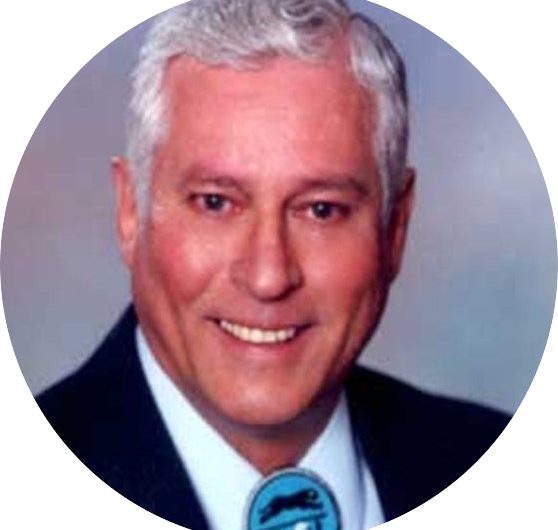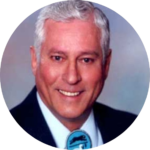 From this Corner
From this Corner
Chief Charles Enyart
FROM THIS CORNER
By
Glenna J. Wallace
CHIEF CHARLES ENYART

He stands tall. With his 6 foot 2 inch frame, when he enters a room, he is noticed. Perhaps his height
gene comes from the Captain line where it is not the least uncommon for the men and women to be tall.
His height certainly didn’t come from the Enyart side where the men tend to be not so tall, or to be
blunt—short. But he has always stood tall, even as a young man. And that is his distinguishing gene.
Born to Champ and Vergie Crain Enyart on November 24, 1936 at Pawnee Indian Hospital, Charles
Dewayne Enyart was the second of what would ultimately be a family of five children. He always
questioned why his mother had to spell his middle name the way she did and he had to wonder why the
third child, a sister named Glenna, had to be born on his birthday two years later.
He grew up in the Eastside Community, nine miles east of Miami, OK, where most of the land had been
allotted to Eastern Shawnee tribal members. His youth was spent on the allotted land of his
grandmother, Sarah Captain Crain, a woman he never met as she died at age 29 when his mother was
only 7 years old. Living in a rural area, it was only natural for him to be introduced to hunting, fishing,
swimming in creeks, milking cows, slopping pigs, butchering hogs, smoking grapevines and playing
sports. Graduating from the eighth grade at Moccasin Bend, District No. 5, he then went to Wyandotte
High School at Wyandotte, OK where he graduated in 1954.
It was in high school where he began to emerge as a leader or standing tall. Beginning in his freshman
year, he played football and basketball, the two dominant sports, at Wyandotte High School. In his
senior year He was the captain of both winning teams. His fellow classmates elected him as most likely
to succeed as well as class president, a role he still feels responsible for 60 years later. He kept his
classmates connected. His 1954 graduating class raised more money throughout the years for
Wyandotte High School than any other class in Wyandotte’s history. Today that money is set aside for
scholarship purposes. Also years later he was honored with the Outstanding Alumni of Wyandotte High
School award. He never had a car in high school, never had possessions, had to hitchhike each weekend
to and from Miami if he wanted to attend a movie or whatever. But he always had friends and he
always stood tall.
Following high school graduation, Enyart enlisted in the United States Army where he served 4 years,
some of it overseas. He then went to college on his G.I. bill, enrolling at NEO at Miami, working at
Northeast State Mental Hospital at Vinita and ultimately transferred to Pittsburg State University at
Pittsburg, KS where he graduated with a Bachelor’s Degree with an emphasis in psychology.
While he worked at Northeast State Mental Hospital, he met and married Betty, a single mother with
three children—Gary, Cathy, and Ronnie– whom he later adopted. Making the Vinita area their home,
Charles went on to Oklahoma University where he received his Masters and was honored by being
chosen Outstanding Social Worker of his graduating class. He remembers those lean times working his
way through college as a time that he and his family ate lots of neck bones and chicken wings. He
continued to work at Northeast State Mental Hospital as —–until he retired in 19?
It was after retirement from Northeast State that Enyart became involved in tribal matters. He was first
elected as Third Councilperson in 1996 then ran for and was elected Chief in 1998. He was then
reelected to another four year term in 2002, retiring in December 2006. Ordinarily his term would have
ended in September but he remained Chief an additional three months while a run-off election was
conducted to determine his successor.
His eight year tenure was an active time for the Eastern Shawnee Tribe of Oklahoma. Due to the land at
Bluejacket Complex being in a flood plain and HUD declaring that grant dollars could no longer fund
projects in floodplains, Enyart turned his vision to the 112 acres on Highway 10 C that had been
purchased in 1988 and the 221 contiguous acres purchased in 1997 (2 lots or 48 acres of that land were
designated for the Housing Authority) . First came the Housing Authority buildings, 12 at that time.
Next he contracted the services of Sherry Rackliff, a dedicated and gifted grant writer employed by the
Delaware Tribe. She wrote a grant for the tribe’s water system and the Social Service Building, now
occupied by the Tribal Administrator, accounting and EPA. The building was built in 2001 with
dedication services scheduled for September. A week before the dedication the9/11 bombings
occurred. At a time when the rest of the world was cancelling events, Enyart said the dedication would
go forward, as would our Tribe and our Nation.
Other construction that occurred in his tenure included the Travel Center, an addition to the Old Bingo
Hall, culminating in 2003 with Bordertown Casino and Bingo, a structure of more than 56,000 square
feet. During this time the tribe also purchased a motel in Ft. Scott, KS with intentions of pursing gaming.
Those plans never came to fruition and ultimately the hotel was sold.
Policies, procedures and programs received major attention during Enyart’s time as Chief. The 20 Year
Plan was formulated, tribal tag program implemented, tribal veterans tags introduced, tribal photo CDIB
card initiated, Revenue Sharing Formula developed and implemented and the first annual Tribal Golf
Tournament hosted.
Enyart spent much effort attempting to open Gaming doors in Ohio for the Eastern Shawnee Tribe. He
was one of two Oklahoma Indian leaders selected to testify before Congress, telling them that federal
rules regulating tribal acquisition of “off-reservation land for casinos are strict enough and that an
outright prohibition isn’t necessary.” In addition to being active nationally, he served as Chairman of the
Claremore Indian Hospital Board, Vice Chairman of the local Intertribal Council (ITC) and was appointed
by Governor Keating to the Oklahoma Indian Affairs Commission.
During Enyart’s tenure, gaming flourished. Revenues from gaming increased with those revenues
resulting in benefits to tribal members increasing each year. But there were difficulties and challenges
in these years as well. The adoption of a new Tribal Constitution in 1994 brought with it legal challenges
of interpretation. Several law suits involving individual tribal members or members of the BC were filed
against Enyart as well as threatened recalls. He survived each incident.
In 2006, Enyart chose not to run for re-election. At the time of this writing, he remains in Vinita living
with his wife Betty and family which in addition to the three children he adopted included the raising of
one granddaughter and now one great grandson who is in high school. Enyart remains active in his
church where he is a deacon and volunteering for the Salvation Army.
Six feet two inches—that’s tall; serving your country—that’s tall; being willing to sacrifice for your family
by routinely eating boiled neck bones or chicken wings—that’s tall. Charles Enyart, tenth Chief of the
Eastern Shawnee Tribe of Oklahoma in modern elected times, is a tall man.
(Charles Enyart’s family is as follows: Great grandfather Tom Captain 1853-1920; Grandmother Sarah
Captain Crain 1892-1921; Father Champ Clark Enyart 1911-1985; Mother Vergie Ellen Crain Enyart 1913-
2005; sister Jean Buxton 1934-2011; sister Glenna J. Wallace 1938-; sister Dixie Martin 1941-; brother
Bud Enyart 1943-)